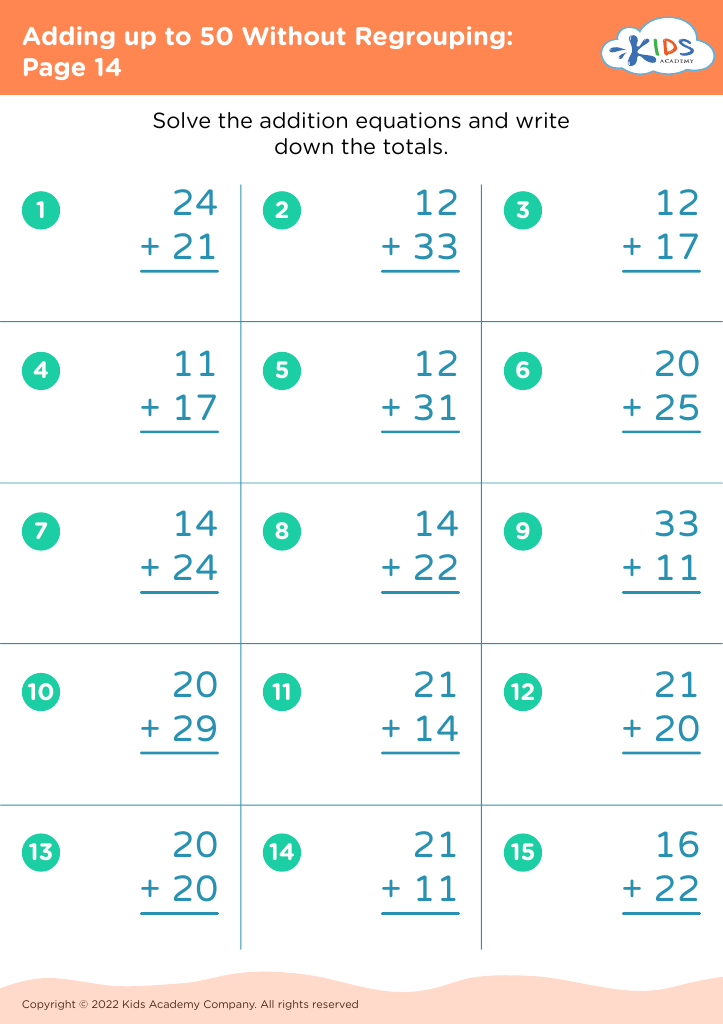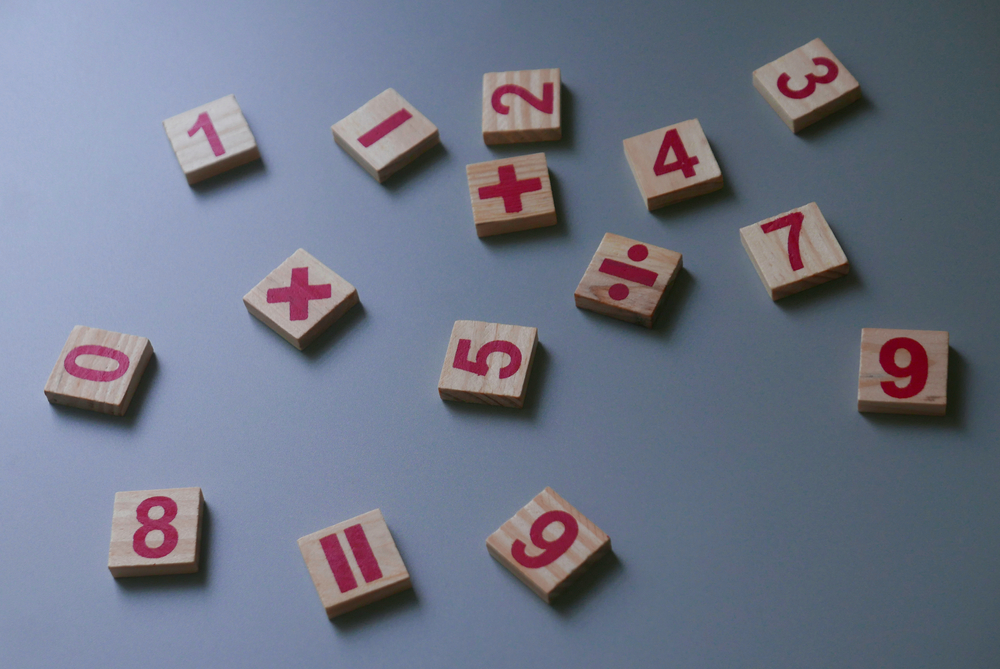Develop number sense Worksheets for Kids
1 filtered results
-
From - To
Question/Answer
What does the Develop number sense skill mean when it comes to Grade 2 Adding up to 50 Without Regrouping learning?
Developing number sense skill in Grade 2 Adding up to 50 Without Regrouping involves helping students understand numbers, their relationships, and how they can be combined in various ways. It emphasizes mental math and intuitive understanding of addition, ensuring students can add numbers up to 50 confidently and efficiently, without needing to regroup or carry over numbers.
What are some effective activities to train students’ Develop number sense skill when teaching them about Adding up to 50 Without Regrouping?
Effective activities for enhancing number sense skills in students learning to add up to 50 without regrouping include using manipulatives such as counters or base-ten blocks, playing number line hopscotch to visualize addition, engaging in interactive games like "Race to 50" using dice, and employing number puzzles that require finding missing addends.
How to test a Grade 2 student’s Develop number sense skills?
To test a Grade 2 student's number sense skills, use activities that involve: comparing numbers (greater than, less than, equal to), identifying place values, simple addition and subtraction problems, understanding and creating patterns, estimating quantities, and recognizing even and odd numbers. Incorporate visual aids like number lines and manipulatives for a comprehensive assessment.













